My Darling Clementine (1946)
Directed by: John Ford
Written by: Sam Hellman, Samuel G. Engel, Stuart N. Lake, Winston Miller
Starring: Cathy Downs, Henry Fonda, Linda Darnell, Victor Mature
USA
ON BLU-RAY: from ARROW ACADEMY on 17th August
RUNNING TIME: 97 min
REVIEWED BY: Dr Lenera, Official HCF Critic
In 1882, Wyatt, Morgan, Virgil, and James Earp are driving cattle to California when they cross Old Man Clanton. Told about the nearby boom town of Tombstone, the older brothers ride in, leaving the youngest brother James to watch over the cattle. They learn that Tombstone is a lawless town without a marshal. When they return to their camp, they find the cattle rustled and James murdered. Seeking to identify his brother’s killer and avenge his murder, Wyatt returns to Tombstone and takes the open position of marshal, soon encountering not just the rest of the troublesome Clanton family but Doc Holliday, a former doctor who has abandoned his practice, moved West and become a notorious gunfighter after contracting tuberculosis, and whose girlfriend Clementine Carter turns up, looking for him….
“You’re not going to use the story, Mr. Scott?”
“No, sir. This is the West, sir. When the legend becomes fact, print the legend”
This famous piece of dialogue is not from My Darling Clementine but director John Ford’s last great Western The Man Who Shot Liberty Valance, but it’s entirely appropriate to it. When I was very young I was crazy about the American West and stuff like the gunfight at the OK Carrol where three lawmen faced down three villains, and films like My Darling Clementine just didn’t cut it because they were so historically inaccurate, Ford’s film even changing the number of people who were at the event and having one character die who actually didn’t. Hell, it even changed the year! Ford’s prettified, heavily romanticised vision of the Old West didn’t sit well with me in general for many years, me finding the work of guys like Anthony Mann and Howard Hawks, which seemed far more honest, far more to my taste, but tastes do change and, after watching Arrow’s Blu-ray of My Darling Clementine for the first time in about twenty years, it really is a very fine piece of moviemaking and – accuracy be damned – probably the best of the many movies about the legendary showdown [followed, I guess, by 1993’s Tombstone and 1958’s Gunfight At The OK Carroll] which has been retold on film and TV 14 times so far.
Ford actually met the real Wyatt Earp in his youth and claimed that he told him how the OK Carrol gunfight was staged. My Darling Clementine wasn’t the first film made from this subject. The honour of that goes to 1934’s Frontier Marshall, which was remade with the same title in 1939. You can find the 1939 film on Arrow’s set and it clearly influenced Ford’s film. Producer Darryl F. Zanuck’s first choice for the role of Doc Holliday was James Stewart, while Vincent Price was also considered. Diana Douglas lost the role of Chihuahua to Linda Darnell because Zanuck said he “didn’t like her teeth.” Even though the town of Tombstone wasn’t near Ford’s favourite location Monument Valley [which is still very familiar in films, the last major example being The Lone Ranger], Ford ‘placed’ it there. A complete town set was built there and 45 days spent shooting the film on location. Upon viewing Ford’s first cut, Zanuck ordered nearly half an hour to be removed and some scenes to be altered, from adding music to even getting studio director Lloyd Bacon to shoot inserts for certain scenes. While the first cut is now lost, another pre-release version was found doing the rounds at American universities, cut down to a running time only a few minutes longer than the released version but still containing some interesting differences. You can read my thoughts on it at the end of this review. Whatever one thinks of Zanuck’s meddling, My Darling Clementine was a major success and is still regarded as one of the greatest Westerns.
Would I do as far as to call the film one of the greatest Westerns? I’m not sure I would go quite as far as to say that, but it is high quality from beginning to end, right from the opening credit sequence which has the cast and crew credits etched on a signpost and the first shot ‘proper’of cattle being driven by Monument Valley, the first of many gorgeous shots where cinematographer Joseph MacDonald really shows how great and evocative black and white photography can be. Wyatt, who has been a marshall in other towns, immediately a very likeable hero – he projects both toughness and decency with a slight shyness and vulnerability. When he and his brothers arrive in Tombstone to find it rowdy and out of control, we already have little doubt that Wyatt can take care of himself. Almost immediately, trouble does start for him when a bullet hits a mirror while he’s trying to have a shave. The culprit is revealed to be a drunken Native American, something that seems to really make the town bad in Wyatt’s opinion, the writing of the scene being typical of films of the time in its attitude to the original inhabitants of the US, though at least Ford later made amends with certain films.
Wyatt first shows his skill with a gun in a confrontation with some of the Clanton brood where he quickly whacks one guy in the face with his gun before using it to shoot another, but those out looking for lots of gun blazing action will probably be disappointed, at least until the final reel, while even the threat of those nasty Clantons [a truly messed-up family where the father whips a son for not killing his opponent] is almost forgotten about for large sections of the running time. Ford’s film, which also seems to have an almost subliminal theme of the civilising of the Old West, is more about character relationships and individual set pieces, and once one adjusts to this one can really have a great time, with almost every scene made the most of and often containing a variety of emotions, from humour to pathos to romance. There’s a lengthy section involving a drunken actor who decides to not show up at the theatre where he’s supposed to be performing and instead recites the famous soliloquy from Hamlet in the saloon. When he stops, Doc, who is gradually dying of tuberculosis and is drinking himself silly [there really is a hell of a lot of drinking in this film] steps in and carries on, the lines actually meaning a great deal to him and telling the viewer of how he really feels about himself. Then there’s the really cute bit when Wyatt takes Clementine, whom he’s besotted with but who loves Doc, to a virtually open air dance in a partially built church. As people start dancing, Clementine clearly wants to Wyatt to ask her to dance but doesn’t want to make it too obvious. Finally he relents, and as they move to the floor Monument Valley is beautifully framed behind them. One of the things Ford was such a master of was in getting his performers to show so much by doing so little, with simple body language often meaning far more than dialogue, and in doing so he always made his characters seem like flesh and blood.
In some ways the more interesting of the two lead characters is Doc, who is filled with torment and loathing. He’s involved with a supposedly Apache but clearly Hispanic prostitute [I think – you have to really read between the lines] who, just as the emotional, sensual Doc is the polar opposite to the laconic, restrained Wyatt, is the polar opposite to the virginal Clementine, but begins to turn his back on her as much as he does to Clementine. Most of the characters in this film are archetypes, and may even have been when the film was made, but there’s still something fresh about it, and sometimes cliches are played with, like when Wyatt starts to tell the bartender about his romantic woes but then gives up and leaves. It’s possible that one thing this film did first, or at least was the first major film to do so, was to establish the kind of Western hero that was, is, and always will be, an outsider. Both Wyatt and Earp are loners, and I don’t think anyone expects Wyatt to return after riding off into legend at the end of the film. There is such a profound sense of myth-building in this film, and this lover of Sergio Leone and Sam Peckinpah [and would they have even existed if there hadn’t been a Ford?] noticed so many echoes in their films of bits and pieces from it. The atmosphere is low-key, even muted, but ideal for the lovely comical bits and pieces like people mistaking Wyatt’s perfume for other things. You get the feeling that Wyatt would be content just reclining on his chair on his porch doing nothing in particular. The actual gunfight, shorter than usual but more accurate in some ways, is brilliantly handled though with maximum tense build-up, and shows Ford to truly be a superb director of action as well as other skills.
Henry Fonda is excellent as Wyatt, but it’s Victor Mature who surprised me in this film, the oft-mocked actor really giving it his all in a highly emotive, and convincing, performance. It was also great to see Walter Brennan, as Old Man Clanton, being genuinely in a manner that is totally different from his usual buffoonish persona. Joseph MacDonald fills the film with great shots, from wide vistas to close-ups where darkness is often used as evocatively as in the greatest film noir. This is most notable when Doc watches someone die, his face filled with shadow as the other person passes into the light. Cyril Mockridge’s score is okay but the musical side of the film works better when various, often familiar even if you don’t know the names – I recognised one from It’s A Wonderful Life which came out the same year – tunes play in the background as source music, almost acting as a wordless Greek chorus. Lovely, lyrical and crammed full of scenes, parts of scenes, and even looks, that you’ll probably remember long after you’ve seen it, My Darling Clementine is a solid gold classic and an essential purchase if you fancy an old school Western.
Rating: 









THE PRE-RELEASE CUT
I watched this version a day after seeing the released one, and I’m of the opinion that it’s slightly better. Though the deletion of one scene involving Chihuahua weakened a later scene in my opinion, none of the cut footage was essential. The extra material, often consisting of just an extra couple of lines, is most welcome though and its removal largely pointless as this version is only six minutes longer. Where I feel the earlier version was better is in several portions where there’s no score, instead often letting natural sounds provide the soundtrack, and in the very final scene where a kiss, in a very obvious insert, replaced a handshake. Overall this version feels a bit more modern and will in future be my preferred version to view. I do though still recommend that you watch the released version first as that is the version that quickly became so beloved and admired.
Arrow’s 4k Blu-ray, which seems to be the same restoration as Criterion’s on their Region A Blu-ray, contains perhaps a bit too much grain during some of the film’s outdoor scenes, while some nocturnal scenes have some fluctuating blackness, but considering the age of the movie it still looks very sharp and natural. Their set looses a couple of special features present on the Criterion but has a different commentary and adds a whole extra film, Frontier Marshall, short review by me coming soon!
SPECIAL FEATURES
* High Definition (1080p) Blu-ray presentations of My Darling Clementine’s theatrical and ‘pre-release’ versions and Frontier Marshal
* Original uncompressed PCM mono 1.0 sound
* Optional English subtitles for the deaf and hard of hearing
* Reversible sleeve featuring original and newly commissioned artwork by Jay Shaw
BLU-RAY DISC 1: MY DARLING CLEMENTINE (THEATRICAL VERSION):
* 4K digital film restoration
* Commentary on the theatrical version by author Scott Eyman and Earp’s grandson, Wyatt Earp III
* John Ford and Monument Valley – a 2013 documentary on the director’s lifelong association with Utah’s Monument Valley containing interviews with Peter Cowie (author of John Ford and the American West), John Ford, John Wayne, Henry Fonda, James Stewart and Martin Scorsese
* Movie Masterclass – a 1988 episode of the Channel 4 series, devoted to My Darling Clementine and presented by Lindsay Anderson
* Lost and Gone Forever – a visual essay by Tag Gallagher on the themes that run through My Darling Clementine and the film’s relationship with John Ford’s other works
Stills gallery
Theatrical Trailer
BLU-RAY DISC 2: MY DARLING CLEMENTINE (‘PRE-RELEASE’ VERSION), FRONTIER MARSHAL AND OTHER WYATT EARP TALES [LIMITED EDITION EXCLUSIVE]:
* 2K digital film restoration of the ‘pre-release’ version of My Darling Clementine
* What is the Pre-Release Version? – a documentary by Robert Gitt, Senior Film Preservation Officer at the UCLA Film and Television Archive, comparing the two versions of My Darling Clementine
* High Definition digital film transfer of Frontier Marshal, Allan Dwan’s 1939 Wyatt Earp film starring Randolph Scott
* Two radio plays inspired by Wyatt Earp – a 1947 adaptation of My Darling Clementine starring Henry Fonda as Earp and Richard Conte as Doc Holliday, and a 1949 * Hallmark Playhouse production in which Conte played the role of Earp
* Frontier Marshall Theatrical Trailer
40-PAGE BOOKLET [LIMITED EDITION EXCLUSIVE]
* Booklet containing new writing on My Darling Clementine by Kim Newman (author of Wild West Movies) and on Frontier Marshal by Glenn Kenny, plus an extensive archive interview with screenwriter Winston Miller, illustrated with original archive stills and posters

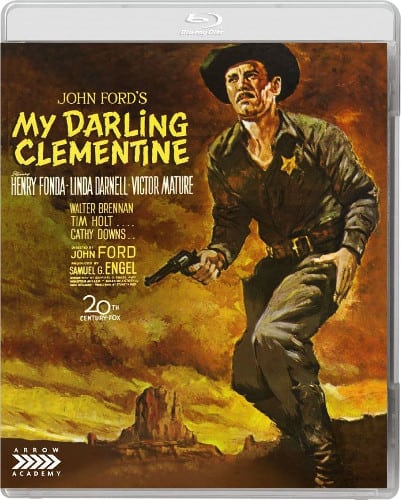
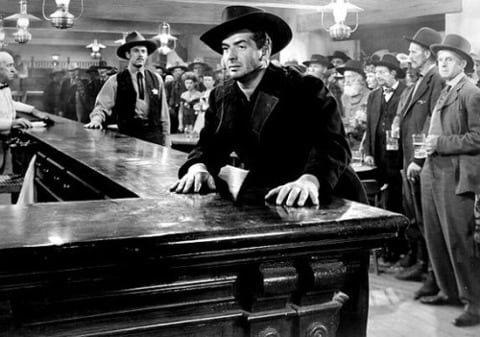


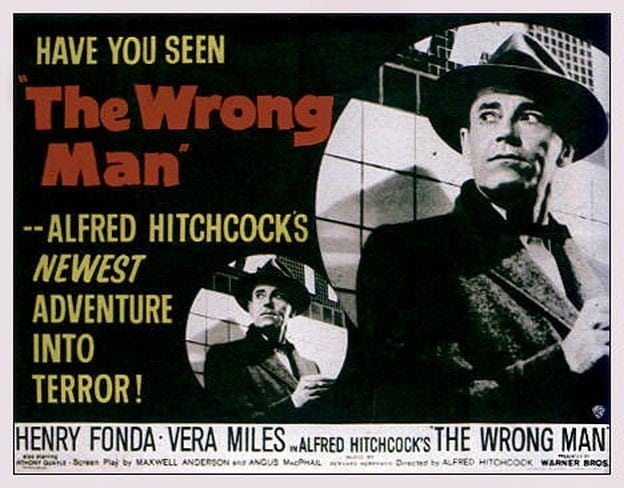
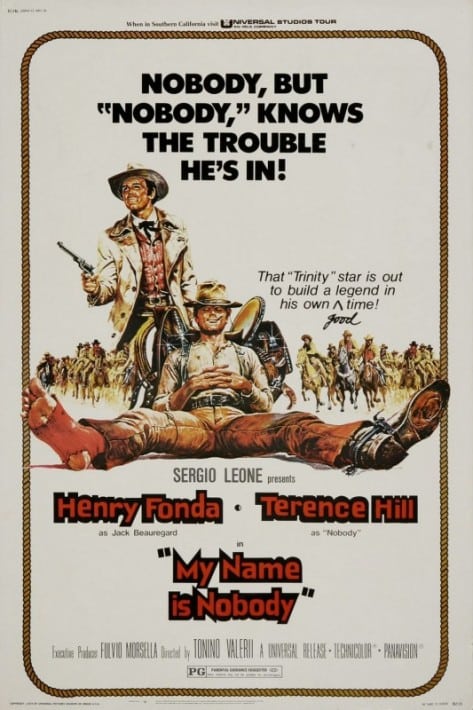
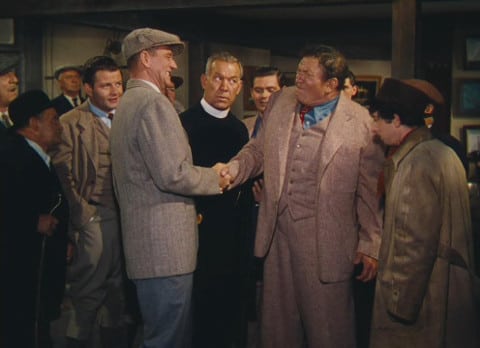
Be the first to comment